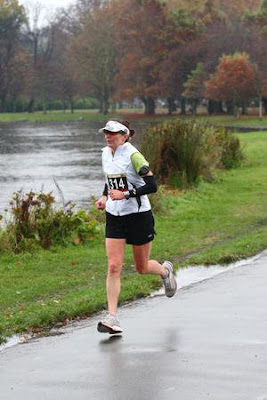It took me about six attempts to start up the computer this morning but we're finally there. once it's working properly it stays working, thank goodness.
Fortunately I have a magic new device on which I can make phone calls, check my emails (and reply and initiate emails), update Facebook if I want to, read and send SMSs, and no doubt many other things I haven't discovered yet. Note my new mobile number: 0425 276 811. If you message me your number, let me know too if you're on the 3 network; calls 3-3 are free. I like the integrated contact list; name, mobile and email all in one place. Oh, and I like the touch screen. It's a Blackberry Storm 2.
And now to today's run: a chilly BBQ Stakes.
Gary Bowen 25:13 (yet another pb)
me 26:50
Kerrie Tanner 30:15. I include Kerrie because every time I see her, which is more or less weekly over many months, she has threatened to join the speedygeese "next Monday", with her daughter. Today I told her she would become much speedier if she ever did join the geese. Actually her Stakes pb is one of the fastest; she's had a few injury issues, that's all.
Gary Bowen running well!
Ewen in typical non-running pose
Fortunately I have a magic new device on which I can make phone calls, check my emails (and reply and initiate emails), update Facebook if I want to, read and send SMSs, and no doubt many other things I haven't discovered yet. Note my new mobile number: 0425 276 811. If you message me your number, let me know too if you're on the 3 network; calls 3-3 are free. I like the integrated contact list; name, mobile and email all in one place. Oh, and I like the touch screen. It's a Blackberry Storm 2.
And now to today's run: a chilly BBQ Stakes.
Gary Bowen 25:13 (yet another pb)
me 26:50
Kerrie Tanner 30:15. I include Kerrie because every time I see her, which is more or less weekly over many months, she has threatened to join the speedygeese "next Monday", with her daughter. Today I told her she would become much speedier if she ever did join the geese. Actually her Stakes pb is one of the fastest; she's had a few injury issues, that's all.
Gary Bowen running well!
Ewen in typical non-running pose































